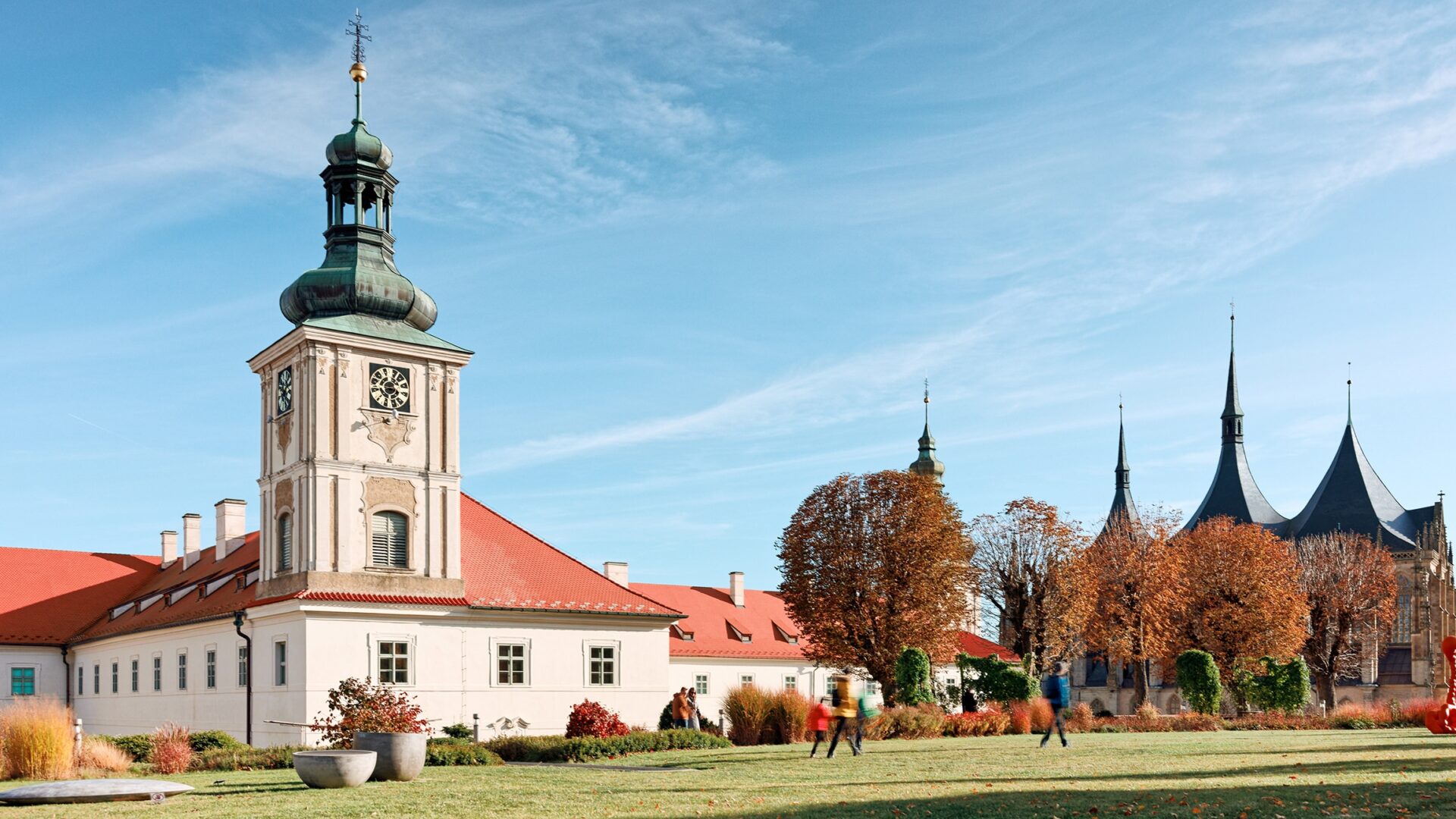Deska s otisky rukou / Panel with Handprints
ENG ↓
Eva Kmentová (1928 – 1980)
Deska s otisky rukou
1967
cín, 44,5 * 42 * 9 cm
GASK P 520
Pro sochařku Evu Kmentovou byl bytostně důležitý fyzický kontakt s materiálem. Jeho přirozené vlastnosti, dotýkání a hnětení hmoty a stopy této práce v hlíně i v křehčí sádře ji v polovině 60. let přivedly k otisku. Její otisky i odlitky částí těla (rukou, nohou, čela, rtů) vypovídají o jedinečném bytostném prožitku a o fascinaci procesem otiskování a snímání sebe sama. Její díla jsou svědectvím o snaze vyjádřit odpovídajícím způsobem křehkost a zranitelnost lidského bytí. Sochařka používá fragmenty těla odděleně, sestavuje z nich figury, ale používá je i jako znak a zástupný symbol – obecně i s jednoznačným odkazem k sobě samé. Její deska-stéla v sobě navždy uchovává nejen dotyk rukou, pro sochařku tak důležitých, ale i část tváře – její rty. Je fantomem i fragmentem její podoby v našem světě, otiskem těla i duše.
Po Státní odborné škole bytového průmyslu v Praze na Žižkově (kde byl jejím učitelem mj. její otec) pokračovala Eva Kmentová ve studiu sochařství na Vysoké škole uměleckoprůmyslové. Provdala se za svého spolužáka, sochaře Olbrama Zoubka. Vedle volné tvorby se její díla na konci 60. let významně uplatnila v soudobých architektonických realizacích. Její tvorbu spjatou s lidskou figurou a hlubokým prožitkem vlastního těla předčasně ukončila zákeřná choroba.
Eva Kmentová (1928–1980)
Panel with Handprints
(1967)
tin, 44.5 * 42 * 9 cm
GASK P 520
For the sculptor Eva Kmentová, physical contact with the material was of fundamental importance. In the mid-1960s its natural qualities, the act of touching and kneading the material and the traces left by these activities in clay or in the fragile material of plaster led her to create imprints. Her imprints and casts of parts of her body (hands, legs, forehead, lips) reflect the unique experience of – and fascination with – the act of imprinting herself in the material. Her work reflects an attempt at finding a suitable way of expressing the fragility and vulnerability of human existence. Kmentová worked with various pieces of the body separately, combining them into figures but also using them as something like a representative symbol – both generally and with clear references to herself. Her panel-stele has immortalised not only the touch of her hands (an important part of the body for a sculptor) but also a part of her face – her lips. It is a phantom and a fragment of her likeness in our world, an imprint of the body and soul.
After graduating from the School for Housing Industry in Prague-Žižkov (where her father was one of her teachers) Eva Kmentová studied sculpture at the Academy of Arts, Architecture and Design. She married her classmate, the sculptor Olbram Zoubek. Besides creating fine art, in the late 1960s she also produced a number of works for architecture. Her series of works on the subject of the human figure and the profound experience of her own body was cut short by her illness and untimely death.

